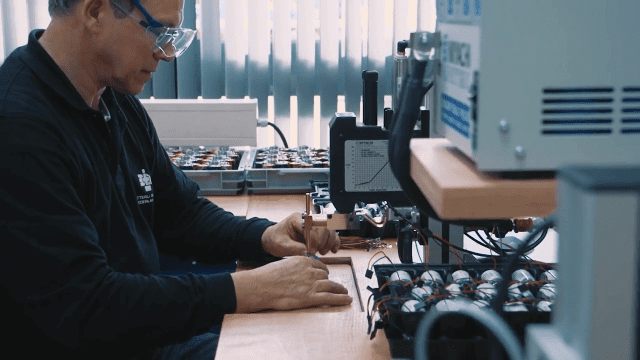Companies (and households) use rechargeable batteries more and more often. This offers convenience and certainty but also entails a certain safety risk.

Li-ion batteries and both open and sealed lead-acid batteries can be particularly hazardous. Li-ion can overheat and catch fire. Lead-acid batteries produce hydrogen, which if not properly ventilated can cause an explosion.
The casing of these Li-ion batteries is often tight-fitting or is packed into the device. As a result, there is less ventilation and heat cannot be released. When the battery package or its wiring is damaged or the wrong charger is used, the battery can overheat to the point that it will self-ignite. As a response to the various battery fires, new packs are now equipped with monitoring and security electronics that intervene when overheating occurs. For safety, it remains highly important that the battery packs are charged the correct way and that safety measures are taken for spaces where lithium batteries are used.
Although exact figures are not available, in 2017 there were an estimated two incidents every week in the Netherlands involving this type of batteries. The problem with lithium was in particular the short circuit that could occur when growing crystals broke though the division between plus and minus. But safety is now much improved. Nails were driven through a Li-ion accumulator. This did not cause any problem. Nevertheless, let yourself be advised by Elfa.
Hydrogen is released when lead batteries are charged. As hydrogen is an explosive gas, battery charging spaces must be well-ventilated. As hydrogen gas is lighter than air it will accumulate below the ceiling. An explosive mix of hydrogen gas and air occurs when the concentration of the hydrogen gas is more than 4%. Of course, Elfa can give extensive advice on the layout of an battery space, considering not only all other strict demands made on such spaces, such as an acid-resistant flor for the battery charging space that has a decay of two percent as compared to sewage systems or wells.